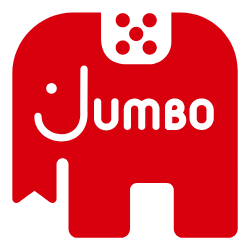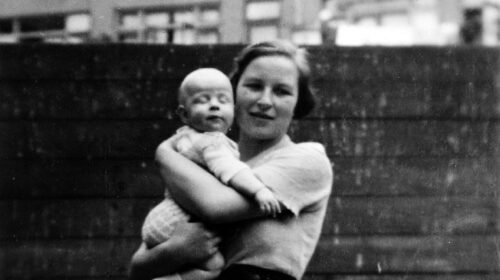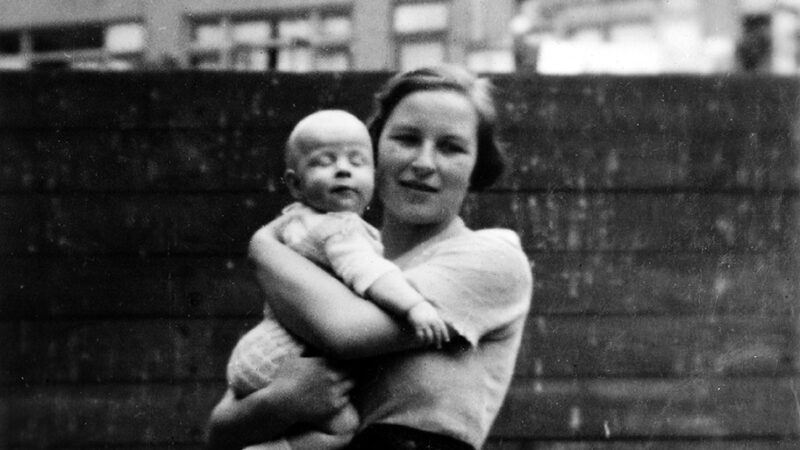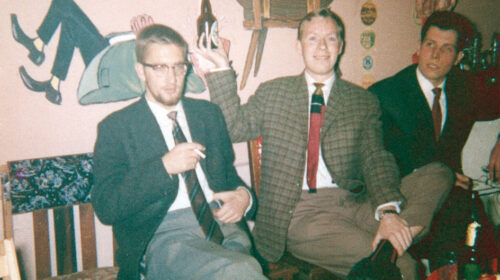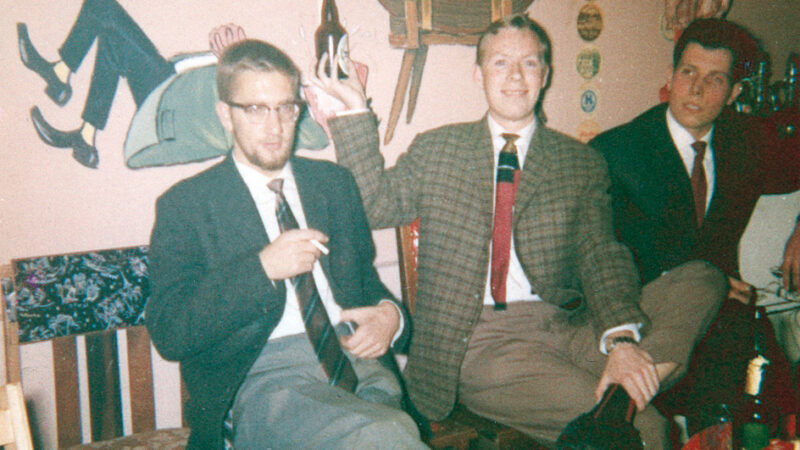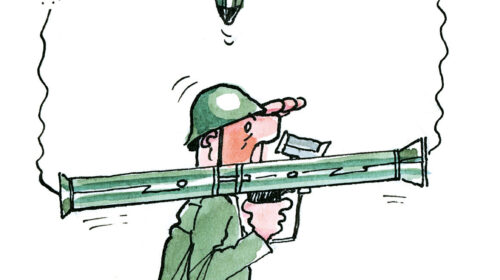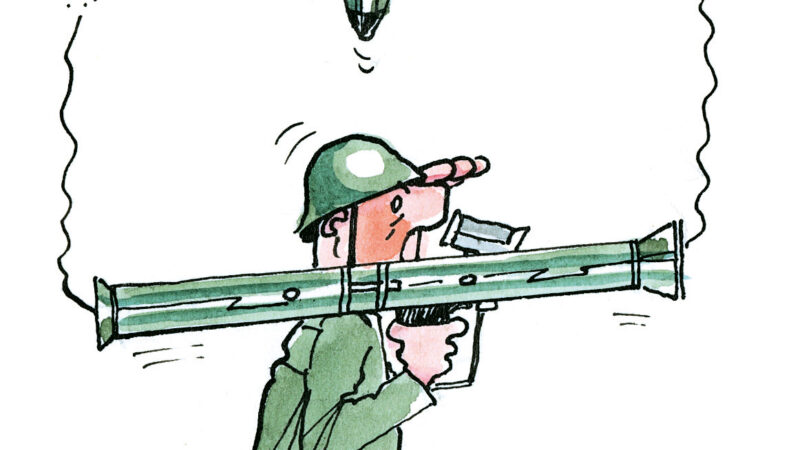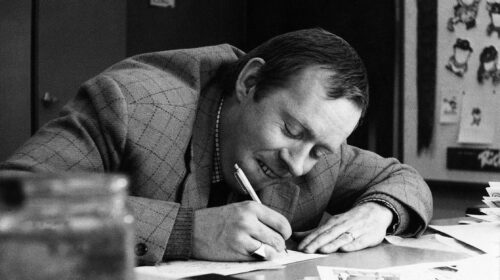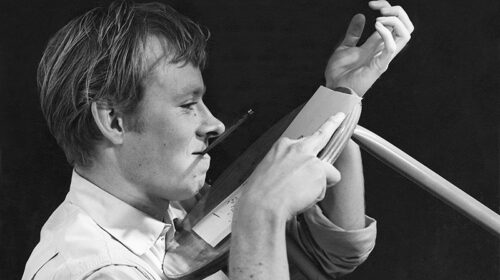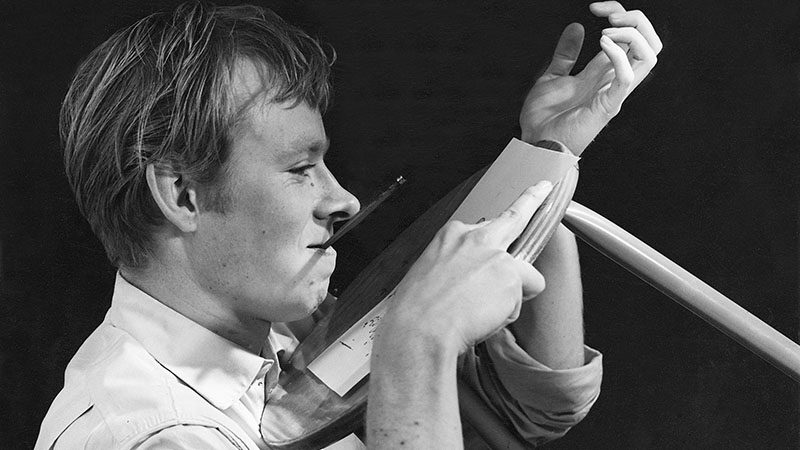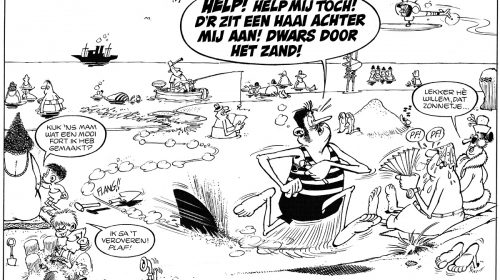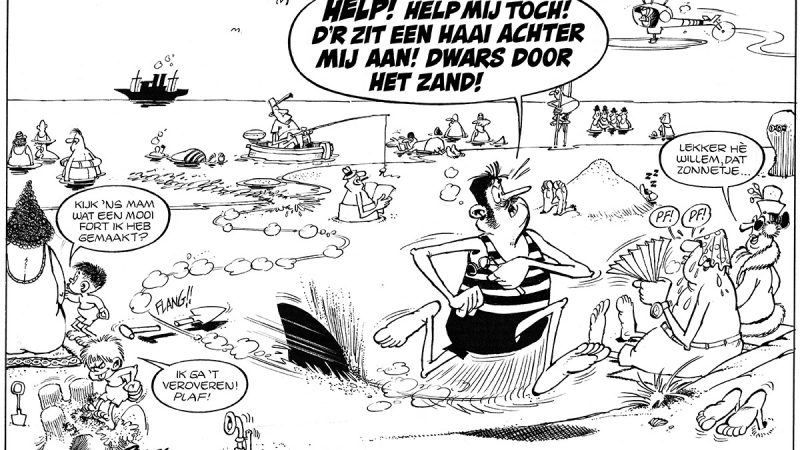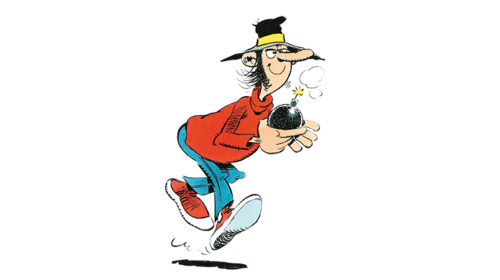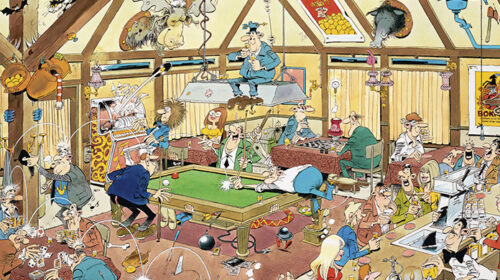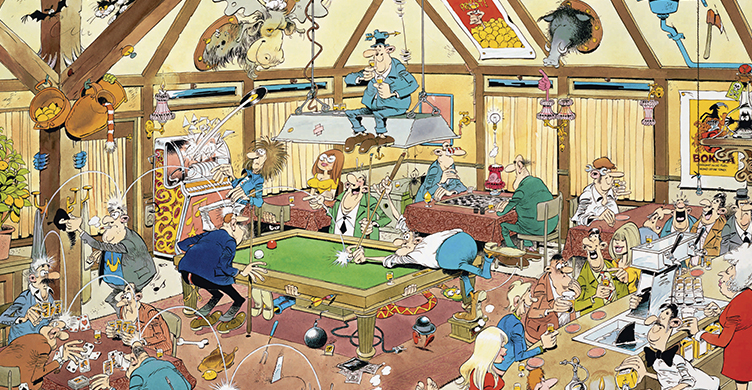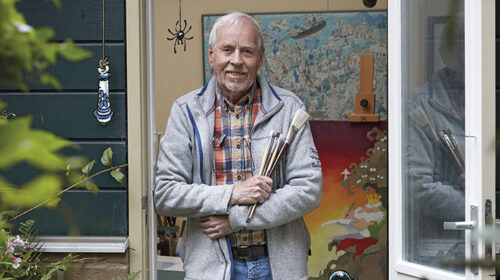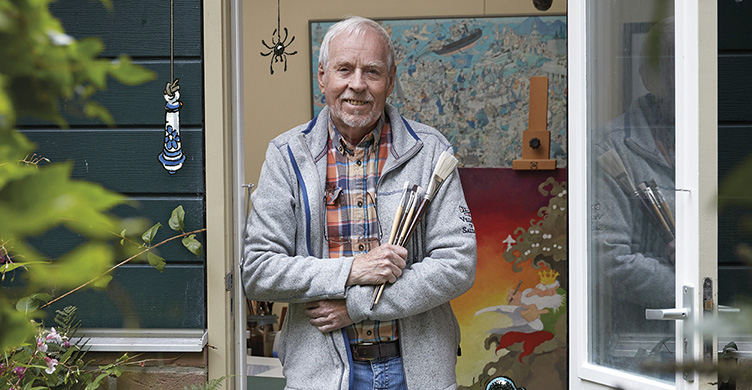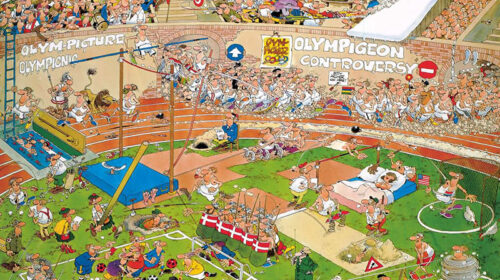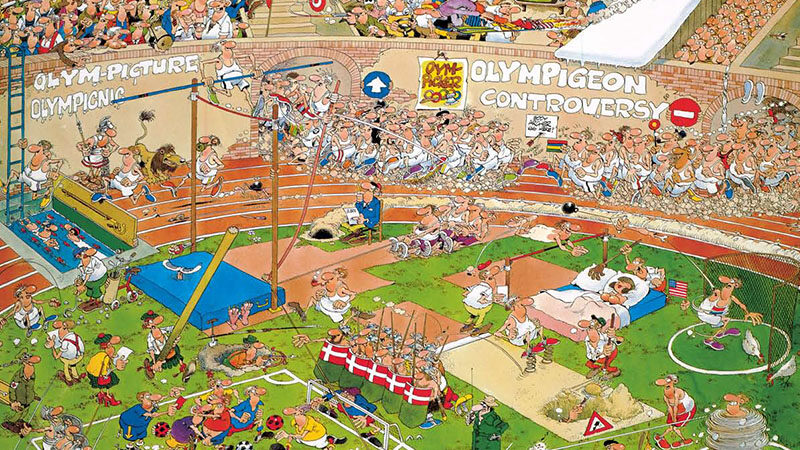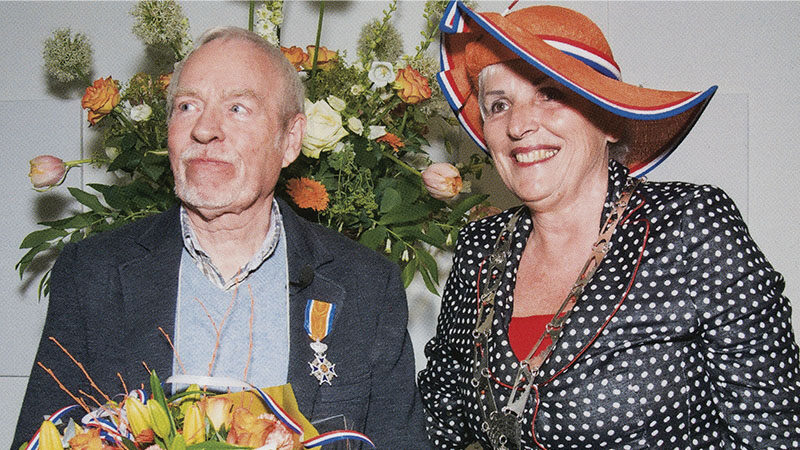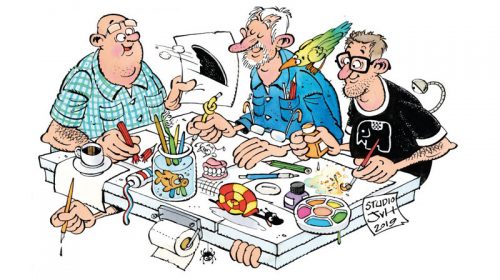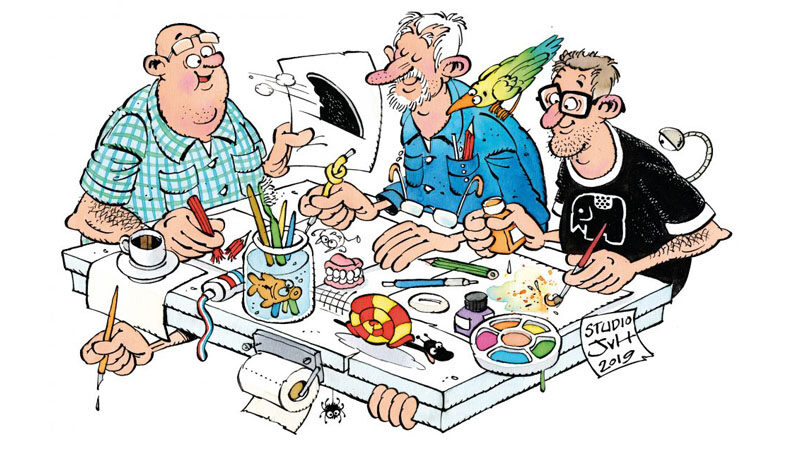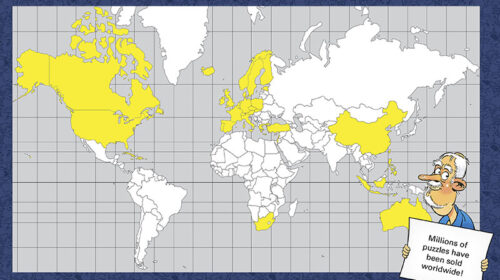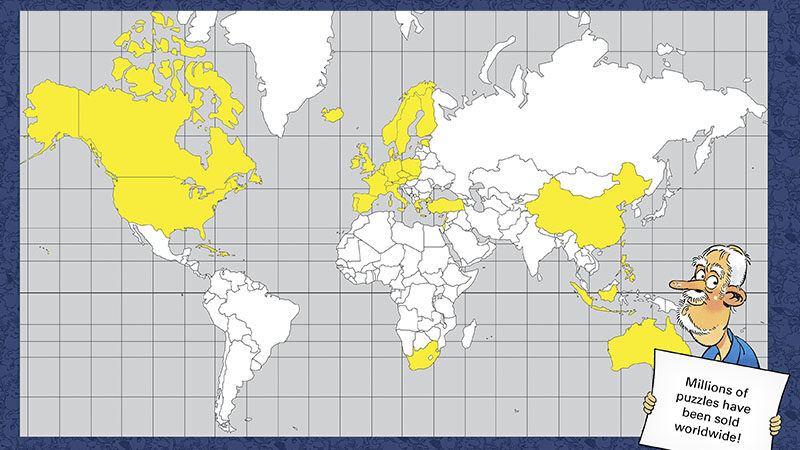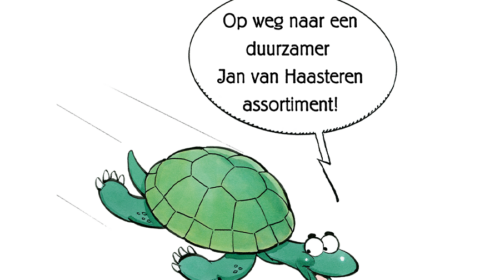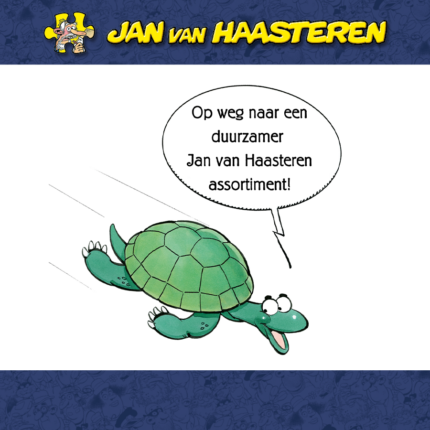About
Jan van Haasteren
Join us on a journey of discovery!
A Jan van Haasteren puzzle is more than just a jigsaw puzzle of a picture. Each puzzle tells a new adventure of the Jan van Haasteren family and piece by piece you discover what the family members are experiencing this time and complete their adventure. And just like with a good book or a good movie, you are curious about the next part afterwards.
Many of the characters you see in the plates, almost all appear in every record and together form the Jan van Haasteren family. And as in any family, each family member has their own story. And they wouldn’t be Jan van Haasteren characters, if there wasn’t also a good dose of absurdity in the characters.
A Jan van Haasteren puzzle is more than just a jigsaw puzzle of a picture. Each puzzle tells a new adventure of the Jan van Haasteren family and piece by piece you discover what the family members are experiencing this time and complete their adventure. And just like with a good book or a good movie, you are curious about the next part afterwards.
History
During Jan’s life and the existence of the brand, there are many beautiful moments to display in a timeline.
How does a puzzle plate come about?
Drawing a puzzle plate is a careful job. On average, the artists take 2.5 months to complete 1 puzzle plate! Here Jan tells how he works.
Determine the topic first
Jan always has ideas for new puzzles. Also during the brainstorming sessions with the Studio, many ideas come to the table.
‘How do I start? Well, I always have some loose ideas. Sketches of crazy things that come to mind every day. Jumbo heeft ook ideeën en die bespreken we dan. But in principle, I am completely free to choose a subject.’
Research and sketches
‘I work out such an idea in a detailed pencil sketch. In addition, I do the necessary research. For the Tour de France puzzle, for example, I picked up some leaflets from the local bike shop. But most of it I found too modern. It is much more fun to draw all the riders in those old-fashioned outfits. I try to reflect the feeling of my youth, when the Tour of Schiedam was held.’
Nowadays he finds his documentation just on the Internet. Very handy.
Ink
After sketching, the plate is inked with the finest Rotring pen and copied to the final format. The enlarged sketch is then transferred to pencil and this pencil drawing is then inked with East Indian ink and a very fine crown pen.
During the cover with pencil, all kinds of details and jokes are added to the plate. The plate is then ready to be transferred into ink and then the very last details are added. For example, dentures, eyes, darts, et cetera. The creative part of the process is now ready and the plate can be colored in.
Colorize
Coloring is done with brush and ecoline. Ecoline gives those beautiful, bright colors for which Jan’s drawings are known and loved.
The end result
Over 1 puzzle plate Jan does about 3 months. Once finished, Jan leaves it for another week. There is always a dot here and a line there what can still be added. After that, the puzzle plate goes to Jumbo for processing into a jigsaw puzzle.
During the cover with pencil, all kinds of details and jokes are added to the plate. The plate is then ready to be transferred into ink and then the very last details are added. For example, dentures, eyes, darts, et cetera. The creative part of the process is now ready and the plate can be colored in.
Production
When the drawing is finished, the files to print the puzzle are prepared by a jumbo graphic designer. The files are then sent to the factory and they can start making the puzzles.
First, the puzzle plate is stuck on a large sheet of cardboard. This sheet of cardboard then goes through a punching machine that cuts the puzzle pieces with a lot of force. The puzzle pieces still have to be made separately from each other. That happens with ‘the breaker’. The breaker is a kind of roller belt with dots over which the puzzle is slid. The dots cause the puzzle to fall apart. At the bottom of the crusher hangs a roll with plastic that ensures that each puzzle ends up in its own bag.
Then the box and lid are glued and shaped. The lid goes to the end of the band, the box first passes an employee who puts a puzzle in it.
After this, the lid is placed on the box and finally the whole thing goes through a foil machine that ‘shrinks’ the plastic film around the box. The puzzle is now ready to be sold!
See also the episode of Het Klokhuis, about the production of Jan van Haasteren puzzles.

